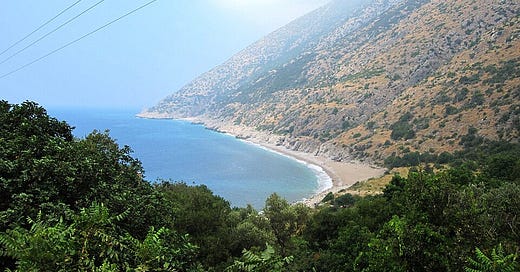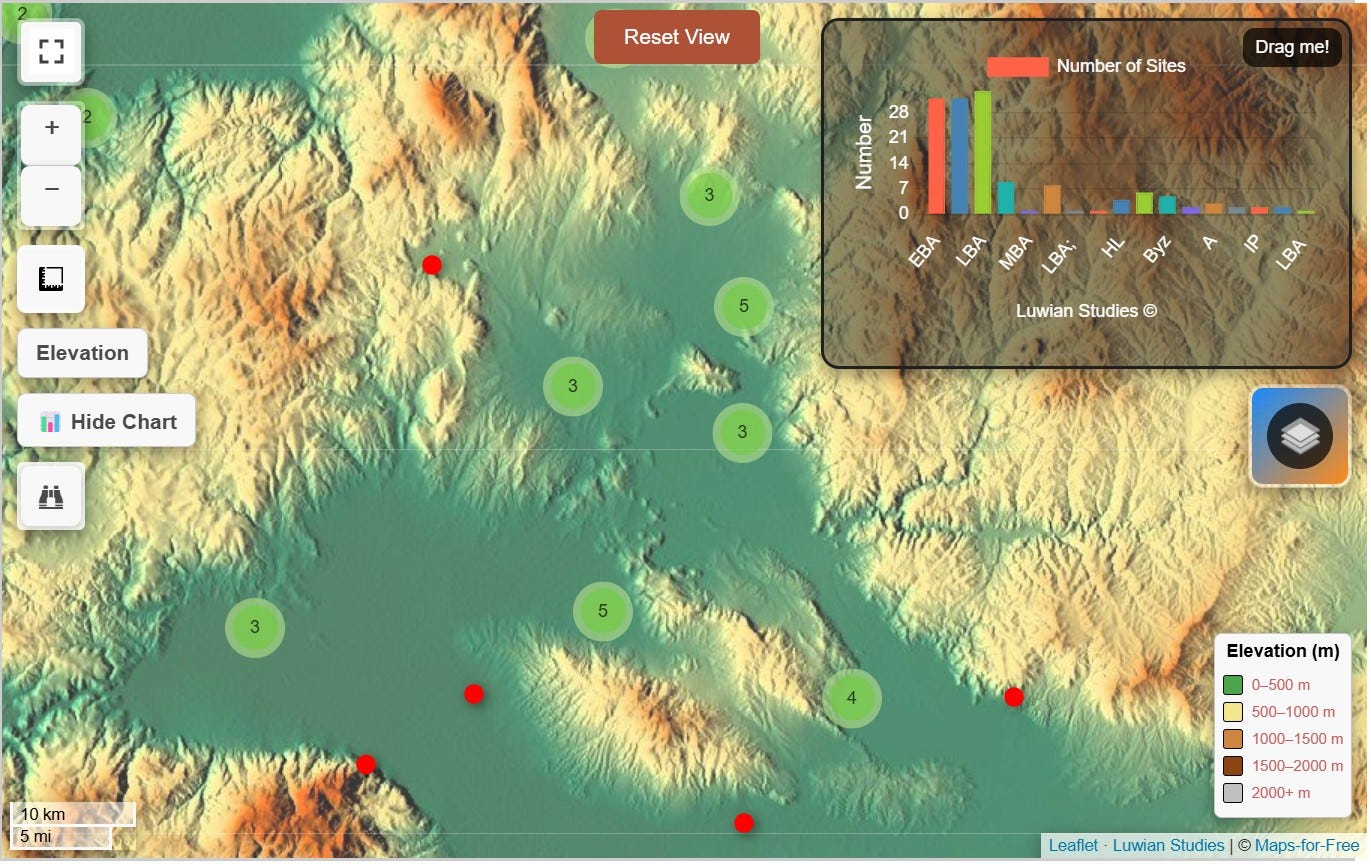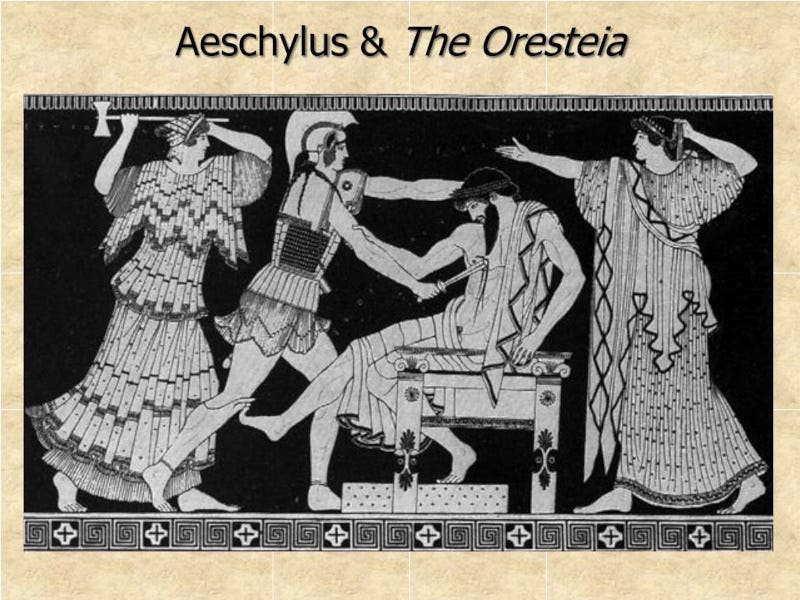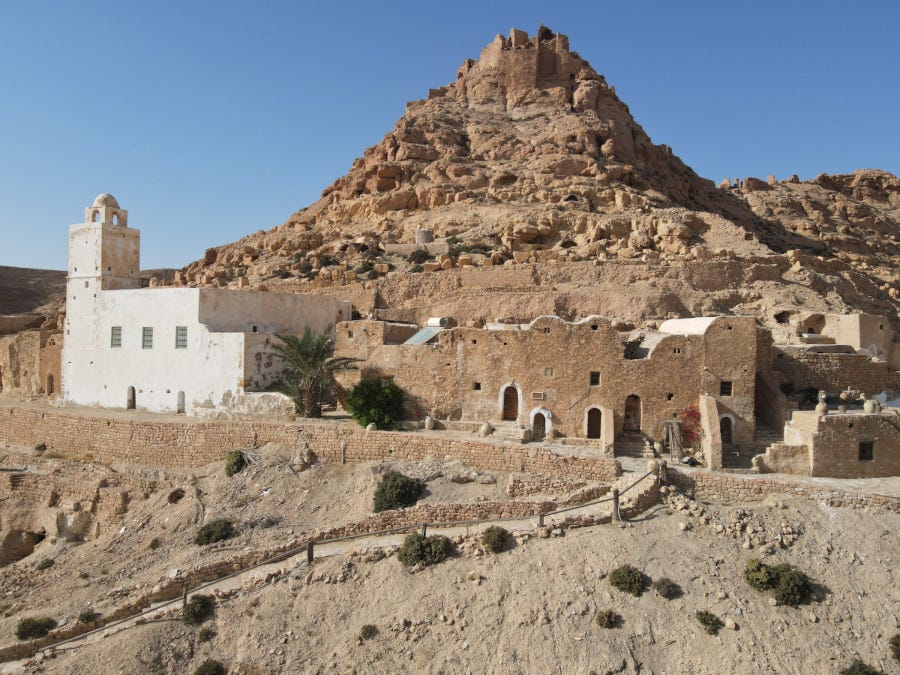ANE Today, 06 Feb 2025
How to Cross a Netherworld Border, The Archaeology of Psychotropic Substances, our Object of the Week, plus the usual round-up of news, books, and other media.
“Lift the mountain on your hands,” or How to Cross a Netherworld Border
By Shane M. Thompson
The netherworld is an ever-present aspect of life (and death) in many ancient Near Eastern cultures. While there is substantial extant evidence from Egypt regarding the netherworld, the same cannot be said for its ancient West Asian neighbors. Mesopotamian texts which discuss the netherworld in depth are rare, although these texts constitute some of our most famous exemplars of Sumerian and Akkadian literature. For instance, Gilgamesh, Enkidu, and the Netherworld displays the state of those living in the netherworld as witnessed by Enkidu. The Descent of Inanna depicts the confined nature of this netherworld, enclosed by seven gates. These texts, among other references to the netherworld in the Mesopotamian literary corpus, represent a land which is bounded – both keeping outsiders from entering and inhabitants from leaving.
Friends of ASOR Webinar: David Ilan on February 19
Save the date for the upcoming FOA Webinar: "The Archaeology of Psychotropic Substances in the Ancient Eastern Mediterranean and Western Asia," presented by Dr. David Ilan on Wednesday, February 19th at 2:00pm ET. The texts of the ancient Near East and eastern Mediterranean Bronze and Iron Ages (including the Hebrew Bible) hint at the use of psychotropic substances (“hallucinogens”) in religious and shamanistic rituals. But the archaeological evidence for this is thin on the ground. This talk will look at the various available hallucinogenic substances and at recent research that indicates their consumption by human beings before examining artifacts that Dr. Ilan (and now others) believe are related to achieving altered states of consciousness. These include ring kernoi, seal impressions from the Aegean region, metal sceptres from the Chalcolithic period, ivory wands from the Late Bronze and Iron Ages, and the altars from the Iron Age temple at Tel Arad. The “high place” takes on a new meaning!
Read more about Dr. Ilan's talk and register here.
In the News:
Roman scroll discovery in Israel reveals brazen 1,890-year-old crime (Newsweek)
Islamic tent uncovered in medieval Christian church painting (Cosmos)
Ruins of Valerian’s palace in Bishapur to undergo archaeological excavation (Tehran Times)
DNA analysis sheds light on ancient Minoan marriage practices
A huge chunk of prized Egyptian Blue pigment is uncovered in Nero’s palace (Artnet news)
Kuwait: A treasure trove of ancient civilizations and archaeological wonders
Object of the Week:

New Books to Explore:
The Trouble with Ancient DNA: Telling Stories of the Past with Genomic Science, by Anna Källén
Needles from the Nile: Obelisks and the Past as Property, by Chris Elliot
A Cultural History of the Sea in Antiquity, edited by Marie-Claire Beaulieu
The Concept of Space in the Book of Judith, by Martina Korytiaková
Landmarks of Identity: Bronze Age Towers of the Oman Peninsula, by Stephanie Döpper
Museum News & Exhibitions:
Ancient Mesopotamia Speaks: Highlights from the Yale Babylonian Collection (virtual visit)
A maritime legacy reborn: Greece’s new Museum of Underwater Antiquities (Greece Is)
Latest Podcasts:
Kingdom of Gods and Demons, with Zoltán Niederreiter (Thin End of the Wedge)
Egyptology and the Exodus Narrative (OnScript Biblical World)
Latest YouTube:
Libya, the final frontier (Imineo Documentaries)
Historic Town of Maaloula, Syria (Amazing Places on our Planet)
Ancient Artefacts Reveal Long Lost Kingdom [ancient Sudan] (History Hit)
Consider taking this short survey to give us feedback on ANE Today.
In Case You Missed It:
Processing Geospatial Data in Archaeology: Introducing LuwianSiteAtlas for Bronze Age Western Anatolia
By Alper Aşınmaz and Eberhard Zangger
Archaeological field projects generate an immense amount of data. How can we use digital technologies to make complex geospatial data more useful for researchers? Read more here.
Sponsored: BAF Lecture Greek Myth and History: The Oresteia of Aeschylus
Wednesday, February 12, 8pm ET: Lillian Doherty, Emerita Professor of Classics, University of Maryland
Friends of ASOR is pleased to share information on BAF lectures. Greek myths look timeless to today’s audiences, but in ancient Greece they were constantly being retold in new ways to please, inspire, or even unsettle their contemporary audiences. As the Greeks had no canon of scripture, their poets had considerable freedom to adapt their myths and explore their meanings. This presentation is focused on one especially significant example of this dynamic: the historical, cultural, and religious context of the fifth century BCE, in which the dramatist Aeschylus produced his Oresteia trilogy about the murder of Agamemnon by his wife Clytemnestra and her lover Aegisthus, and; the foundation of the Areopagus, the law court that tried cases of homicide in Athens.
This lecture will take place at the Bender JCC located at 6125 Montrose Road, Rockville, MD 20852. General admission: $10. For more info, click here. Questions? Email baf.jccgw@gmail.com.
Sponsored: ISD The Seleukids at War: Recruitment, Composition, and Organization
The narratives around key events are the prime sources for systematic inquiries into the sophisticated war machinery of the Seleukids, complemented by Greek and Akkadian inscriptions that attest to garrisons and settled veterans. The authors herein engage diverse sources and the latest scholarship to explain the tactics, manpower, and strategy of Seleukid warfare. Check out the book here.
ASOR CHI Update: Ksar Douiret, Tunisia
For many, the name Tatooine evokes the arid landscape of the desert planet that plays such an important role in the “Star Wars” universe. However, the iconic places and landscapes of this fictional world are built upon the very real history, culture, and environment of Tunisia’s Tataouine Governorate. Since October 2024, ASOR and its partners at the Douiret Women’s Association (Wakry Association) have been working to preserve Ksar Douiret, one of the most iconic ksars, or fortified villages, in Tataouine Governorate, with support from the U.S. Department of State’s Ambassadors Fund for Cultural Preservation. Read more here.
Enjoy what you’re reading? Consider supporting ANE Today through a once-off or recurring donation to ASOR.
Published with the assistance of The Lanier Theological Library and Stevan Dana









